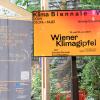
The first Vienna Climate Biennale took place from April to July. CircEUlar was one of the scientific partners of the Biennale, contributing insights on the potential of circular economy strategies to combat climate change. Project coordinators Marina Jovanovic and Volker Krey reflect on the 100-day festival and the unique collaboration between science and art.
Within the framework of the Klima Biennale, a unique collaboration between science and art highlighted CircEUlar’s research findings through the lens of artists.
Over a four-month period, a distinguished curator, Nora Mayr, facilitated dynamic exchanges between four groups of researchers from CircEUlar with the artists Barbara Kapusta, Borjana Ventzislavova, Julian Palacz, and Imayna Caceres. Under the title "Sensing Resonance", these collaborative efforts resulted in a series of artworks that were unveiled for the first time at the Vienna Climate Summit, held at Kunsthaus Wien on 24 and 25 June 2024.
The initiative aims to enrich cultural education by fostering forward-thinking concepts for schools and extracurricular learning programs. Bringing together the public and stakeholders from culture, science, education, and schools, the event sparked cross-disciplinary dialogue through a combination of good practice examples, workshops, and scientific, practical, and artistic impulses. The objective of the event was to collectively find new approaches for communicating climate and scientific knowledge.
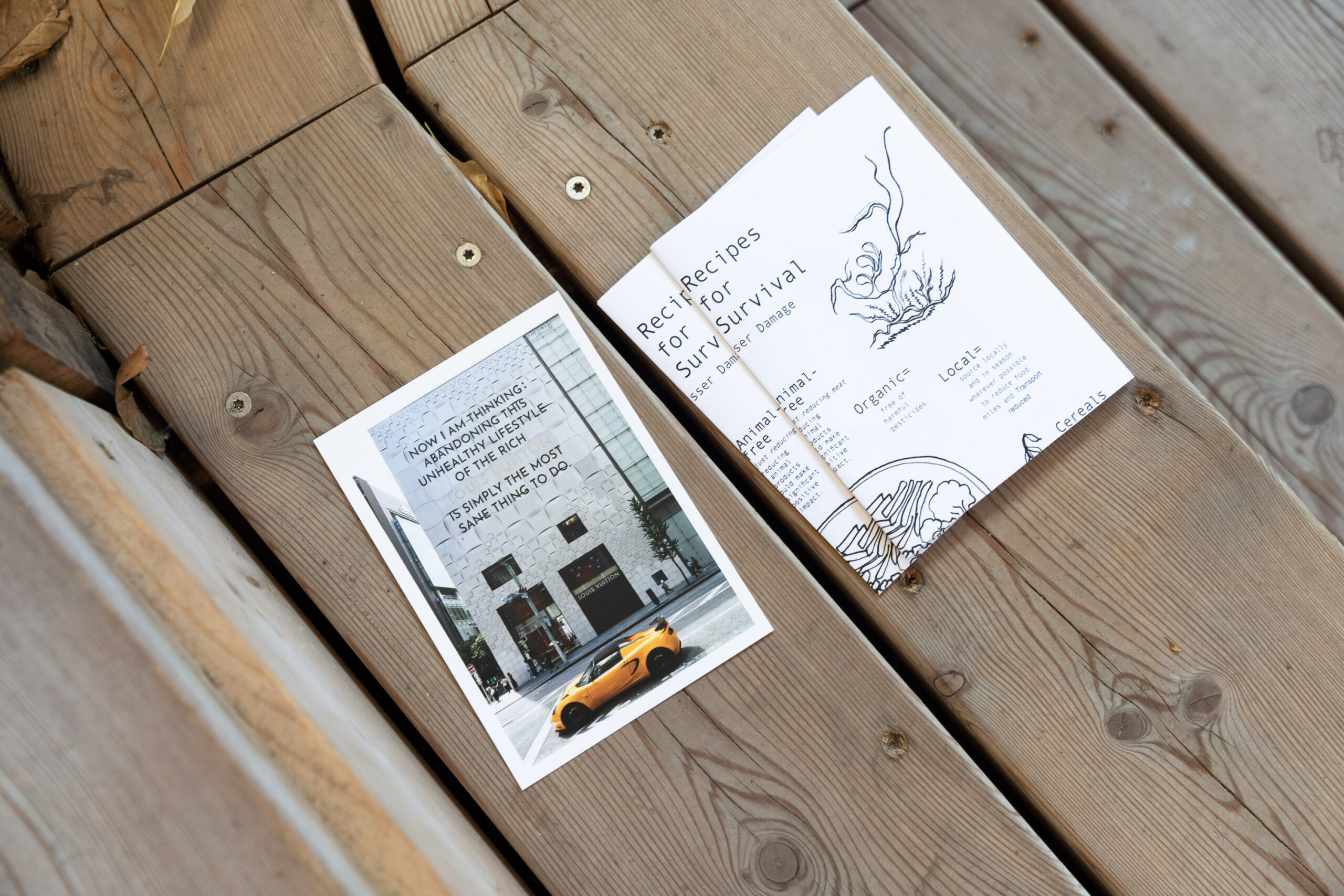 © Sensing Resonance, Klima Biennale Wien x CircEUlar, Vienna Climate Summit 2024. Photos: Paul Pibernig
© Sensing Resonance, Klima Biennale Wien x CircEUlar, Vienna Climate Summit 2024. Photos: Paul Pibernig
‘Sensing Resonance’ merges scientific knowledge with artistic interpretation
Sensing Resonance
Resonance can be an echo, but it can also refer to when one body reverberates in unison with another. In psychology, resonance describes the moment in which a feeling or thought triggers something in us – when it resonates with us emotionally.
"Sensing Resonance showcases four artistic responses to the EU project CircEUlar, which focuses on the circular economy. For me, the exciting aspect of this art and science collaboration was that the outcome of this encounter was initially uncertain. It was a collective leap into the unknown, which ultimately produced playful, poetic, and even humorous ripples," says Nora Mayr, the curator.
Barbara Kapusta x "Narratives for Circular Economy-driven Net-Zero Emission Pathways"
In their presentation at the Vienna Climate Summit, Volker Krey (IIASA), Barbara Kapusta, and Nora Mayr shared insights into the collaborative process behind the artistic interpretation of selected findings from the development or "Narratives for Circular Economy-driven Net-Zero Emission Pathways".
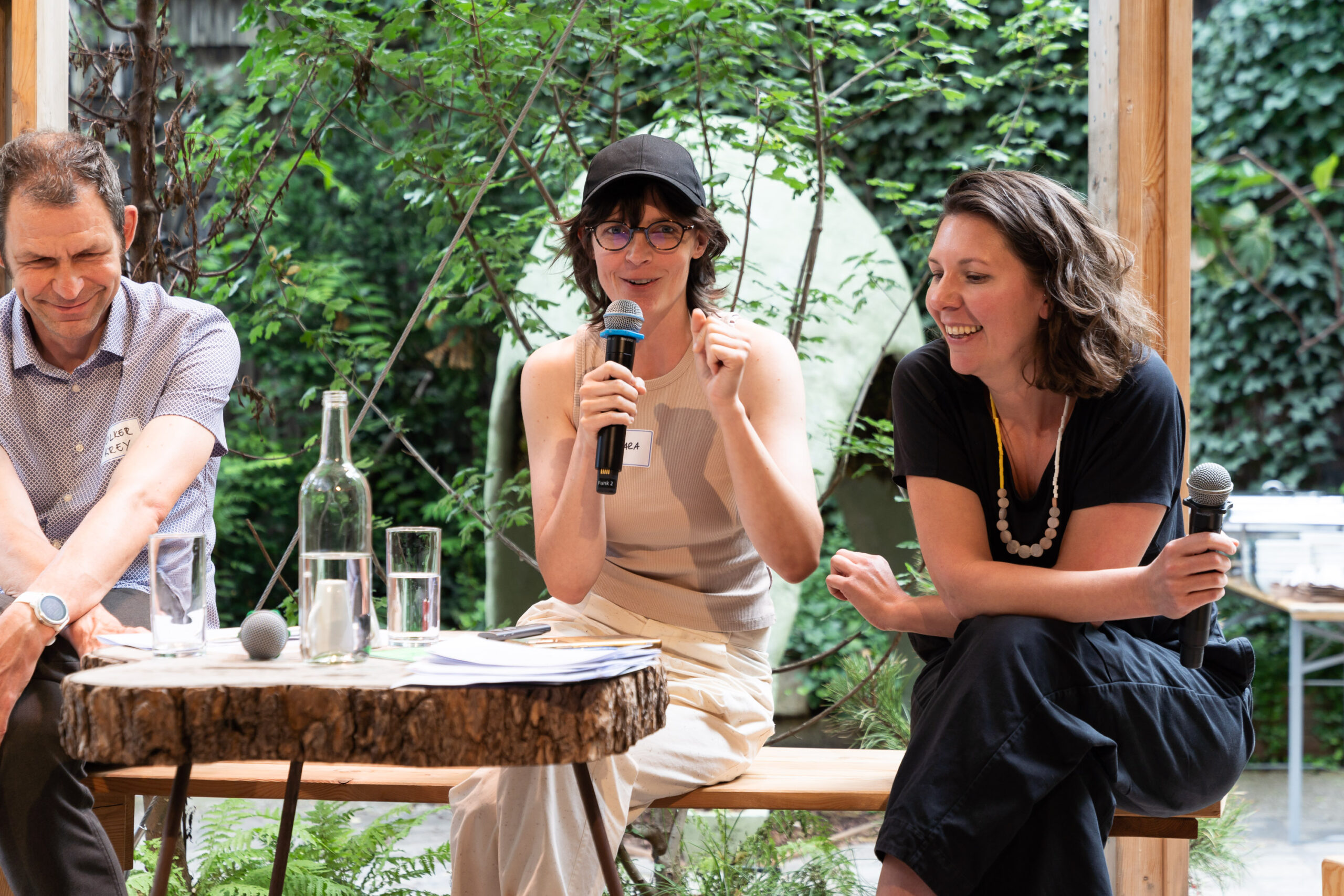 © Sensing Resonance, Klima Biennale Wien x CircEUlar, Vienna Climate Summit 2024. Photos: Paul Pibernig
© Sensing Resonance, Klima Biennale Wien x CircEUlar, Vienna Climate Summit 2024. Photos: Paul Pibernig
Volker Krey (IIASA), Barbara Kapusta, and Nora Mayr at the Vienna Climate Summit
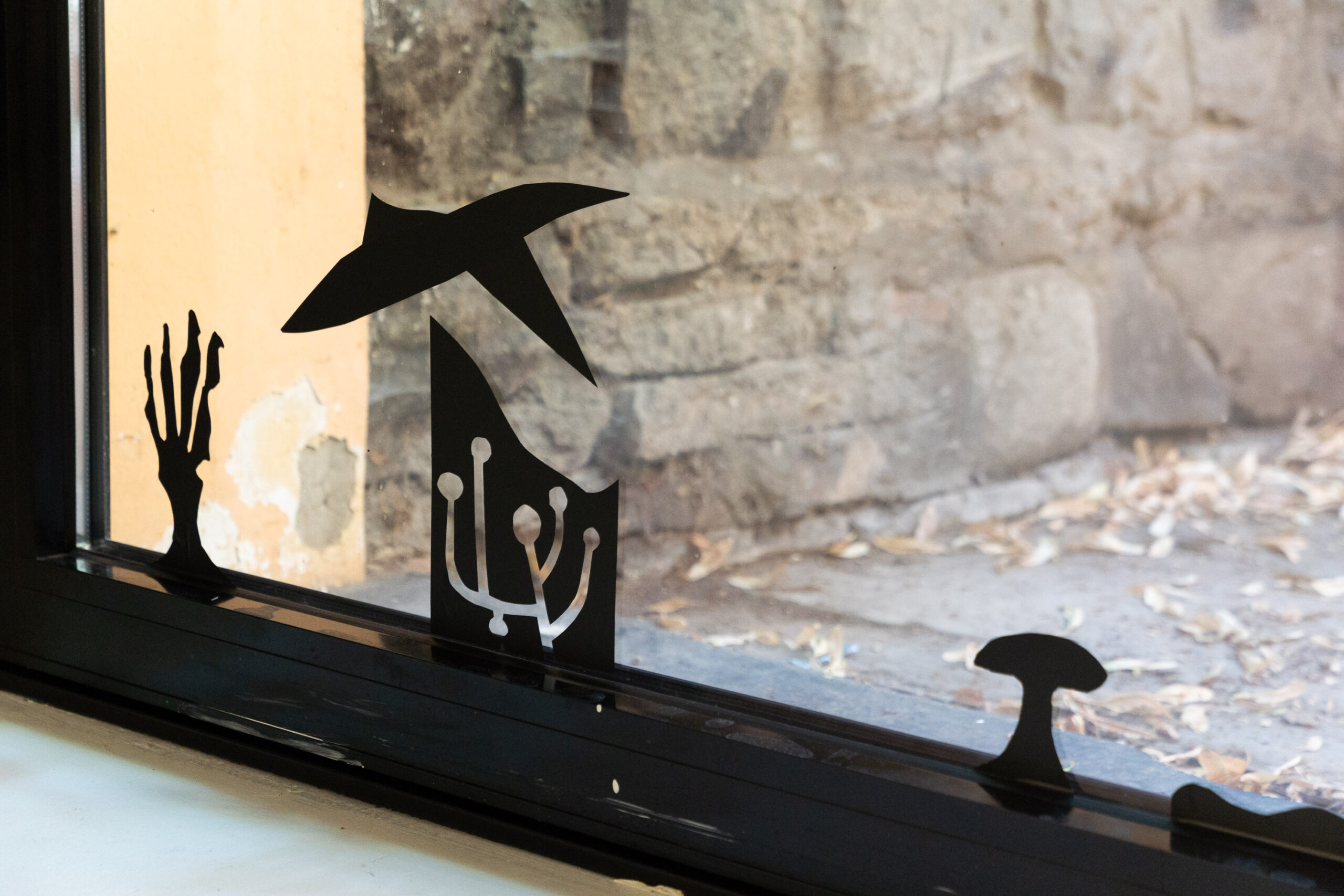 © Sensing Resonance, Barbara Kapusta, Klima Biennale Wien x CircEUlar, Vienna Climate Summit 2024. Photos: Paul Pibernigmisproduced vinyl
© Sensing Resonance, Barbara Kapusta, Klima Biennale Wien x CircEUlar, Vienna Climate Summit 2024. Photos: Paul Pibernigmisproduced vinyl
In her participative work ‘Assembly’, Barbara Kapusta proposes her own form of circular economy: remnants of the misproduced vinyl work A New Fiery Community were offered to visitors for recycling.
Building upon existing data and their potential for a net-zero emission trajectory, the research project "Narratives for Circular Economy-driven Net-Zero Emission Pathways" is developing concepts for various future scenarios to facilitate the integration of circular economy principles. At the heart of the project lie principles such as dematerialization, extending the lifespan of material stocks, and enhancing recycling and waste treatment. Additionally, the project examines the boundary conditions — geopolitical, economic, and psychological — that may either facilitate or impede change, while delving into the pivotal question, "How might possible futures unfold if we successfully adopt certain circular production and consumption practices?" through a dynamic synergy of art and science.
Sensing Resonance with Barbara Kapusta was developed by the artist in an exchange with Volker Krey (IIASA), Elena Verdolini (CMCC), and Marina Jovanovic (IIASA).
Borjana Ventzislavova x "Circular Consumption Practices"
In an exchange with Henrike Rau (LMU) and Eoin Grealis (LMU), Borjana Ventzislavova developed proposals for possible changes towards a more equal, inclusive, and harmonious world, using modified quotes from the interviews conducted for the CircEUlar research project "Circular Consumption Practices" to address the absurdities of our consumer world.
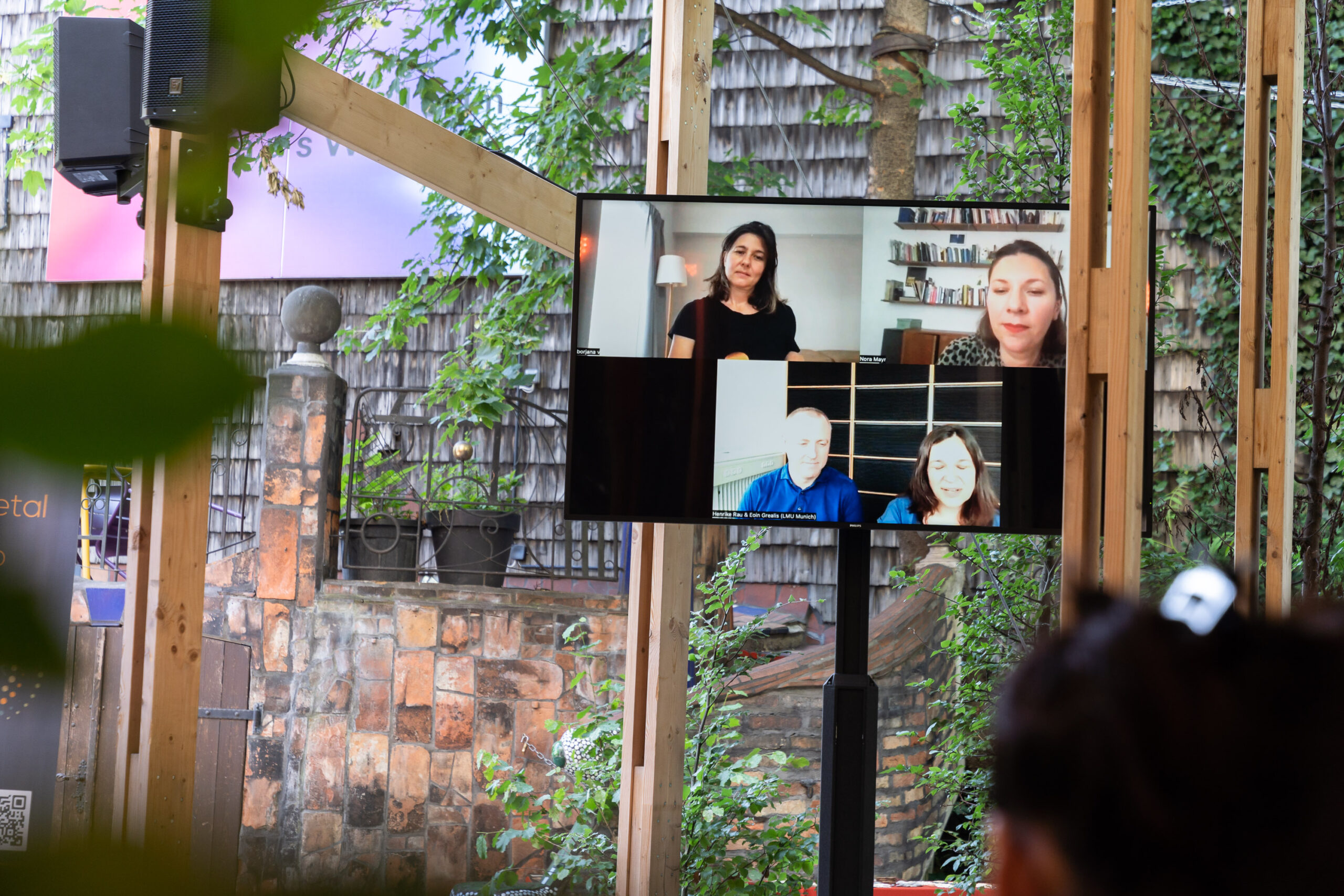 © Sensing Resonance, Klima Biennale Wien x CircEUlar, Vienna Climate Summit 2024. Photos: Paul Pibernig
© Sensing Resonance, Klima Biennale Wien x CircEUlar, Vienna Climate Summit 2024. Photos: Paul Pibernig
Borjana Ventzislavova, Nora Mayr, Eoin Grealis (LMU), and Henrike Rau (LMU) at the Vienna Climate Summit
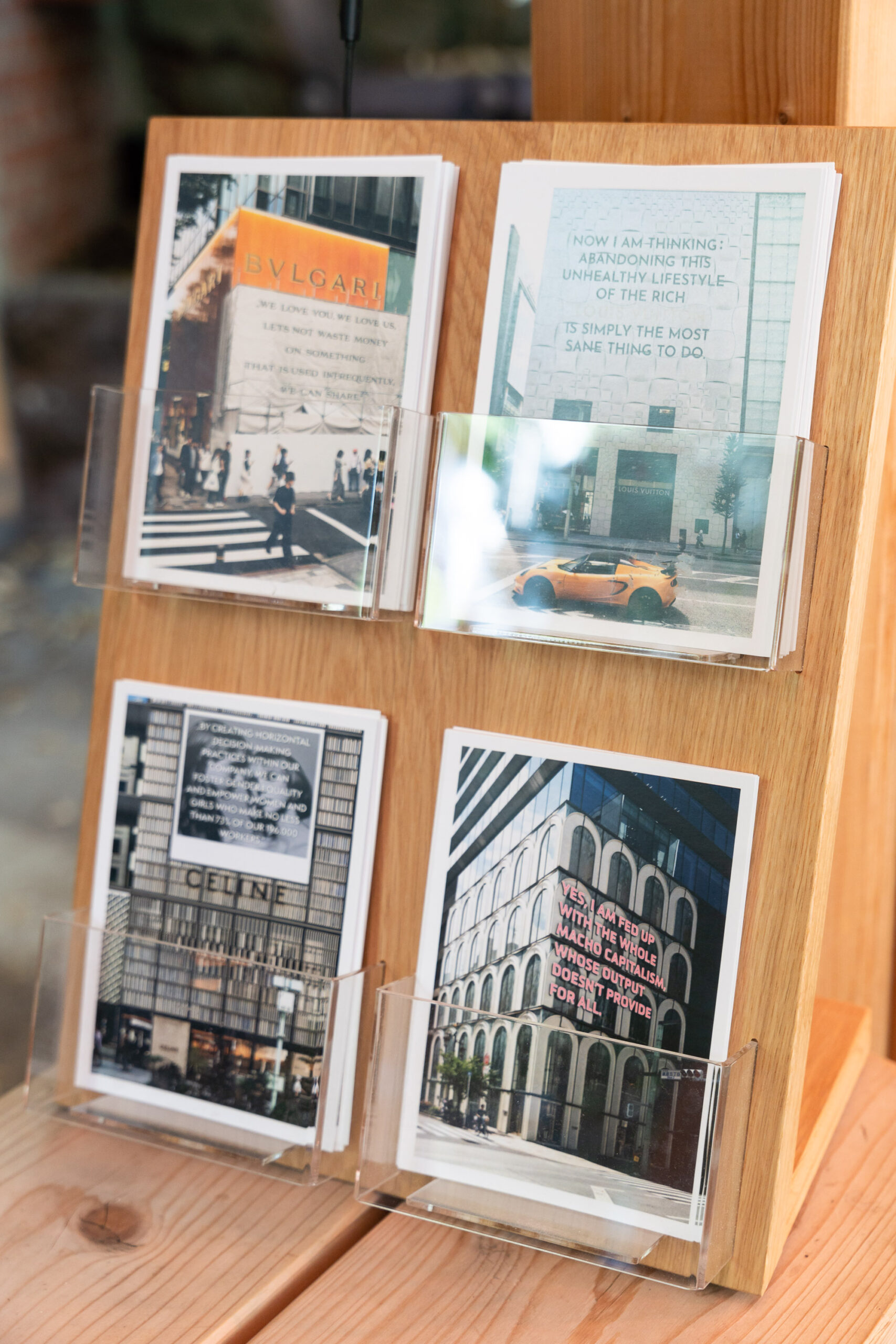 © Sensing Resonance, Borjana Ventzislavova, Klima Biennale Wien x CircEUlar, Vienna Climate Summit 2024. Photos: Paul Pibernig
© Sensing Resonance, Borjana Ventzislavova, Klima Biennale Wien x CircEUlar, Vienna Climate Summit 2024. Photos: Paul Pibernig
The artist uses photomontage to stage imaginary advertising campaigns for Bernard Arnault’s luxury brand empire.
On the basis of biographical interviews conducted across Western Europe, the project "Circular Consumption Practices" explores the realities of people's daily consumption and their links to circularity. The interviews uncover the reasons behind an individual's engagement (or lack thereof) in promising practices such as living without a car, sharing living spaces, or buying and selling second-hand goods online.
Under the title Now it’s sunny in the rich man's world!, Borjana Ventzislavova is developing a "sketch for our world" comprised of audio, video, and photographic works, which addresses a central factor in climate concerns: the fact that the wealthiest segment of the population is the strongest driving force behind global warming.
Julian Palacz x "Mapping Building Stocks across Europe"
During the event, the audience was engaged by an interactive installation and a series of laser engraved drawings that playfully manipulate the collected floor plans of the research project "Mapping Building Stocks across Europe" and analyze their aesthetic characteristics.
The research project "Mapping Building Stocks across Europe" aims to develop detailed, high-resolution maps of building stocks across Europe that may reveal unexpected spatial patterns. To achieve this immense task, the research team collected data from more than 200 million buildings in 30 countries (EUBUCCO data set).
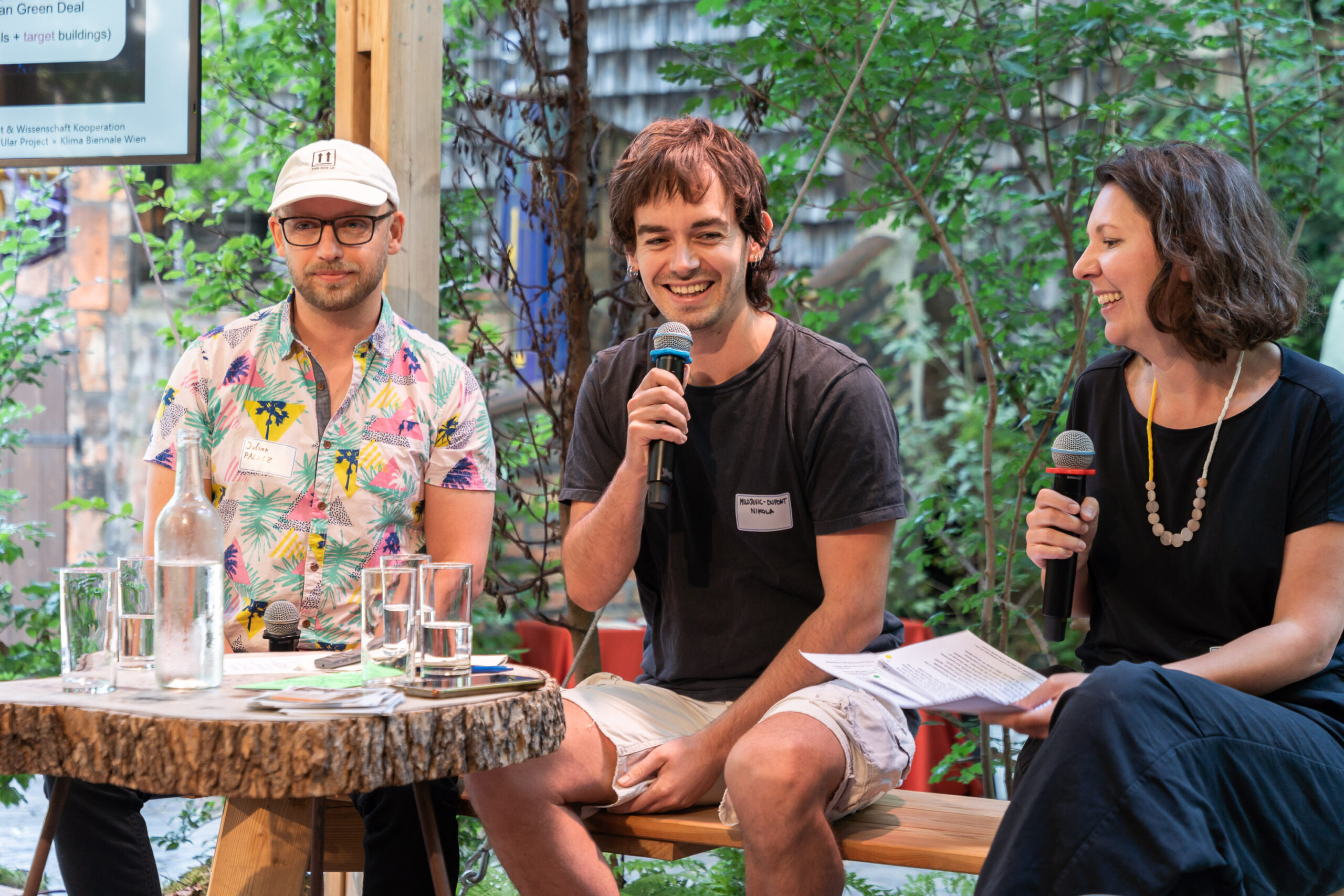 © Sensing Resonance, Klima Biennale Wien x CircEUlar, Vienna Climate Summit 2024. Photos: Paul Pibernig
© Sensing Resonance, Klima Biennale Wien x CircEUlar, Vienna Climate Summit 2024. Photos: Paul Pibernig
Julian Palacz, Nikola Milojevic-Dupont (MCC), and Nora Mayr at the Vienna Climate Summit
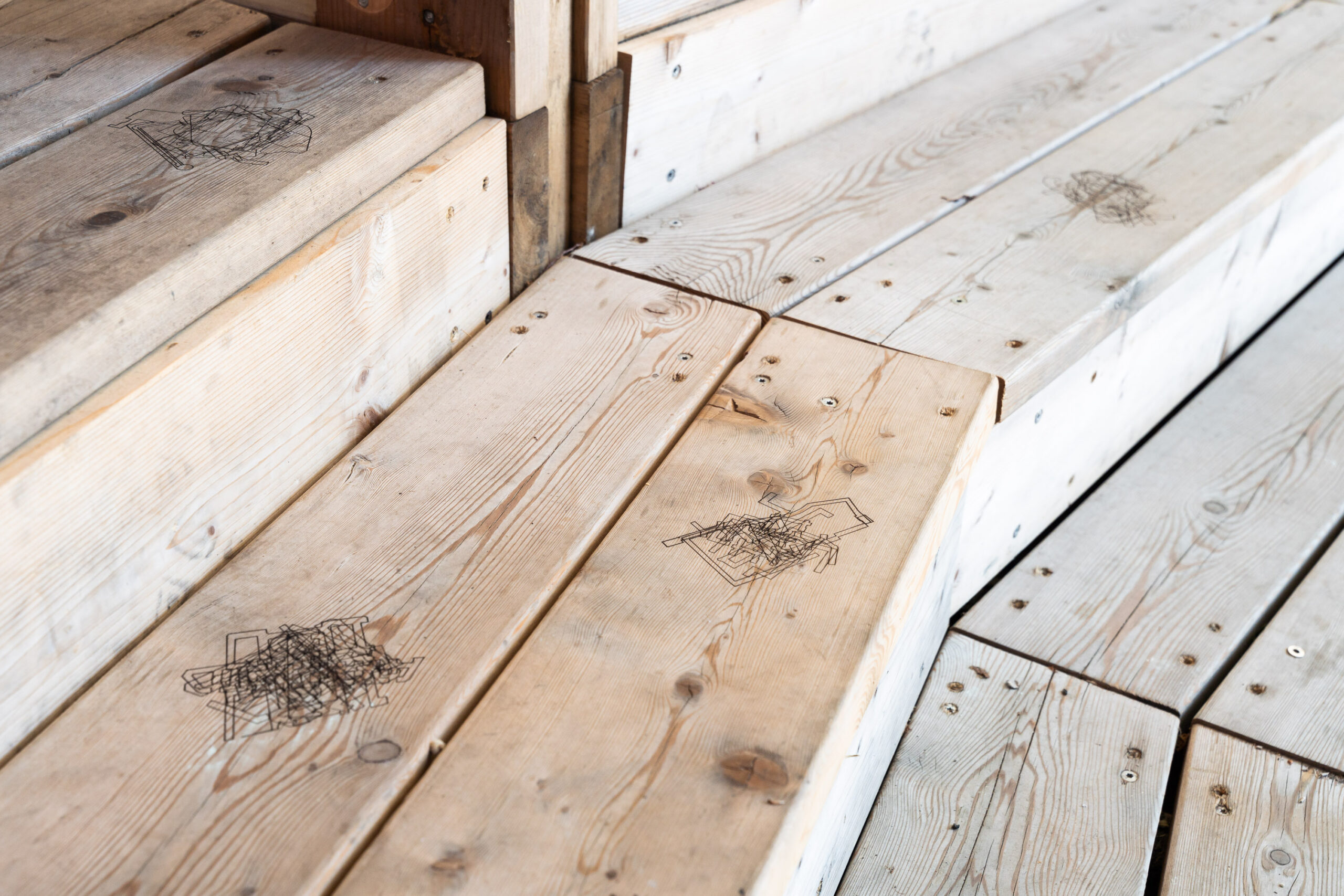 © Sensing Resonance, Julian Palacz, Klima Biennale Wien x CircEUlar, Vienna Climate Summit 2024. Photos: Paul Pibernig
© Sensing Resonance, Julian Palacz, Klima Biennale Wien x CircEUlar, Vienna Climate Summit 2024. Photos: Paul Pibernig
What images result when the floor plans of the ten largest, tallest, or oldest building typologies are superimposed? Delicate laser engraved drawings visualise the outcome on elements of the Culture-Climate Pavilion (Breath Erath Collective)
Collaborating with Nikola Milojevic-Dupont (MCC), Julian Palacz focused on the visualisation and poetic representation of data under the title "Little Boxes". Through speculative queries within the database, Palacz generates meta-referential correlations that open up new perspectives on the existing data set.
Imayna Caceres x "Biodiversity Footprint of Urban Consumption"
The Vienna Climate Summit also featured a lecture performance by artist Imayna Caceres, inspired by her exchange with scientists Lisa Kaufmann (BOKU) and Helmut Haberl (BOKU).
Many of us are aware that our dietary choices and consumption habits directly impact the climate and biodiversity. In recent years, numerous research reports have honed in on the interplay between global ecological shifts and a sustainable and healthy food system in Vienna. These reports encompass analyses of global land use and its connection with consumption trends, which necessitate complex supply chains – for example, a spatially explicit assessment of the regional to global impacts of Viennese biomass consumption. Imayna Caceres contrasts this research with her own investigations into sensory-based forms of knowledge and counter-narratives of symbiotic worlds.
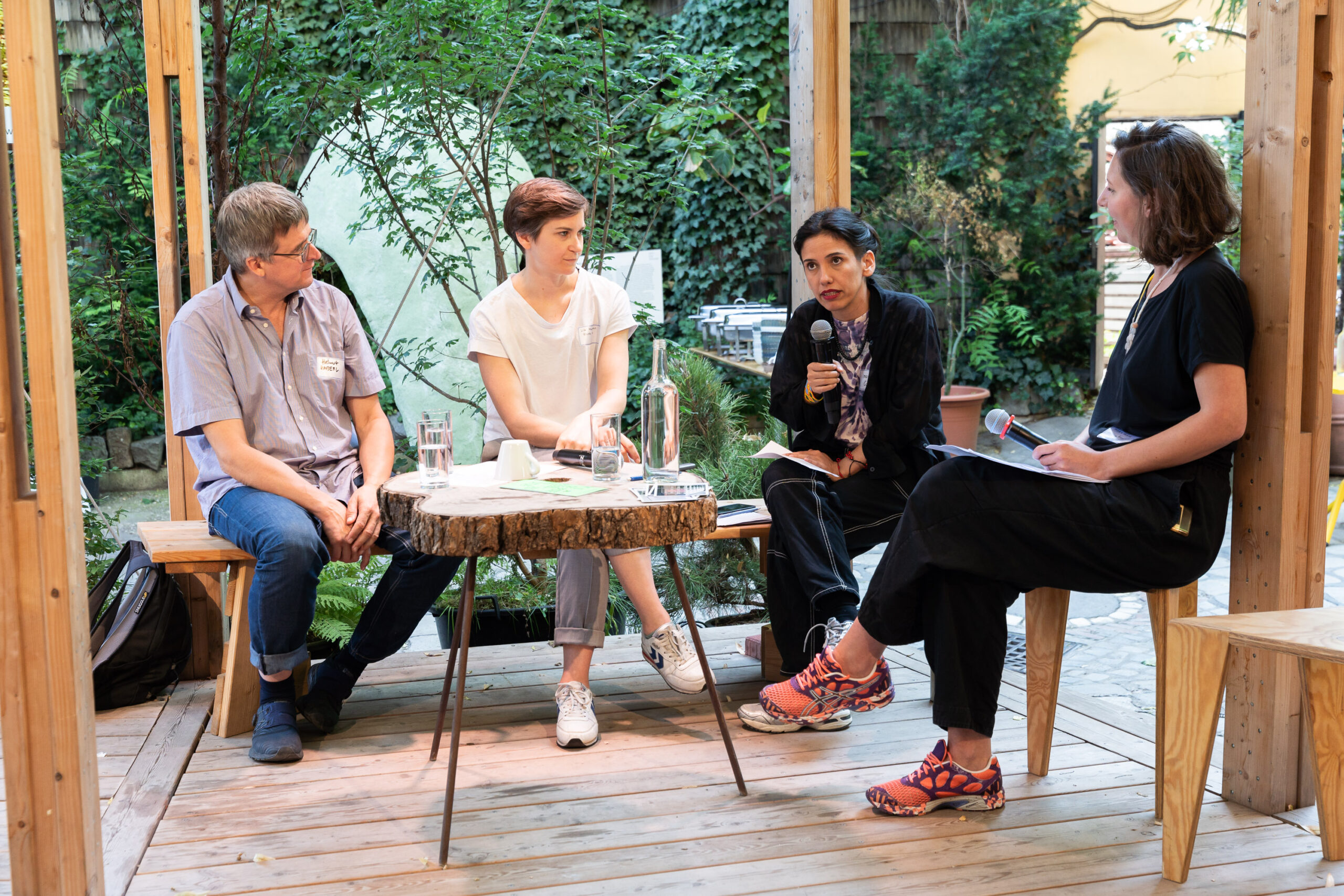 © Sensing Resonance, Klima Biennale Wien x CircEUlar, Vienna Climate Summit 2024. Photos: Paul Pibernig
© Sensing Resonance, Klima Biennale Wien x CircEUlar, Vienna Climate Summit 2024. Photos: Paul Pibernig
Helmut Haberl (BOKU), Lisa Kaufmann (BOKU), Imayna Caceres and Nora Mayr at the Vienna Climate Summit
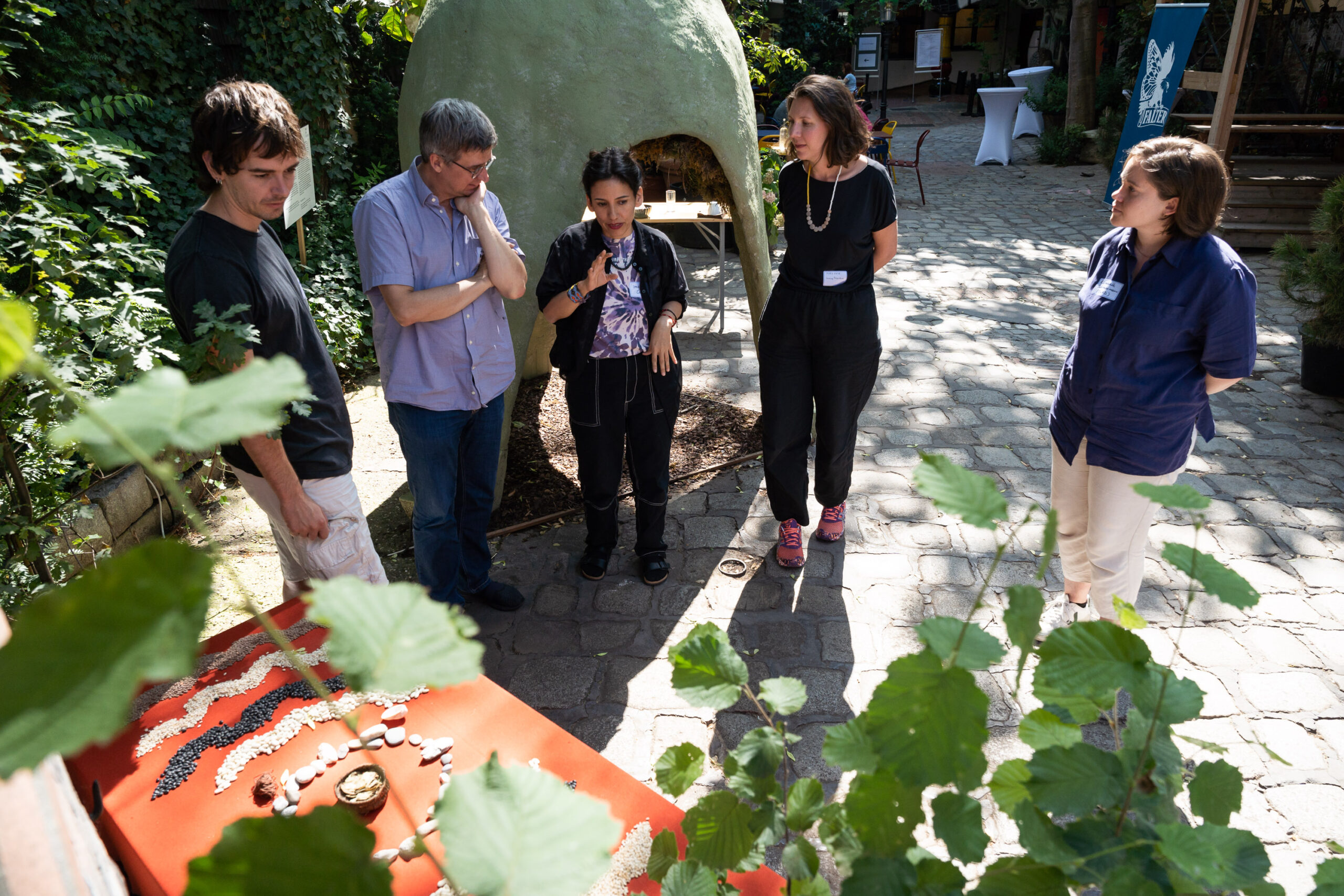 © Sensing Resonance, Imayna Caceres, Klima Biennale Wien x CircEUlar, Vienna Climate Summit 2024. Photos: Paul Pibernig
© Sensing Resonance, Imayna Caceres, Klima Biennale Wien x CircEUlar, Vienna Climate Summit 2024. Photos: Paul Pibernig
In the form of a lecture performance, the artist conducts an examination into biodiversity and food consumption in Vienna – an “offering” for what keeps us alive and recipes for less planetary damage
This article was first published on the CircEUlar Project website. Read the original article here.
Note: This article gives the views of the authors, and not the position of the IIASA blog, nor of the International Institute for Applied Systems Analysis.